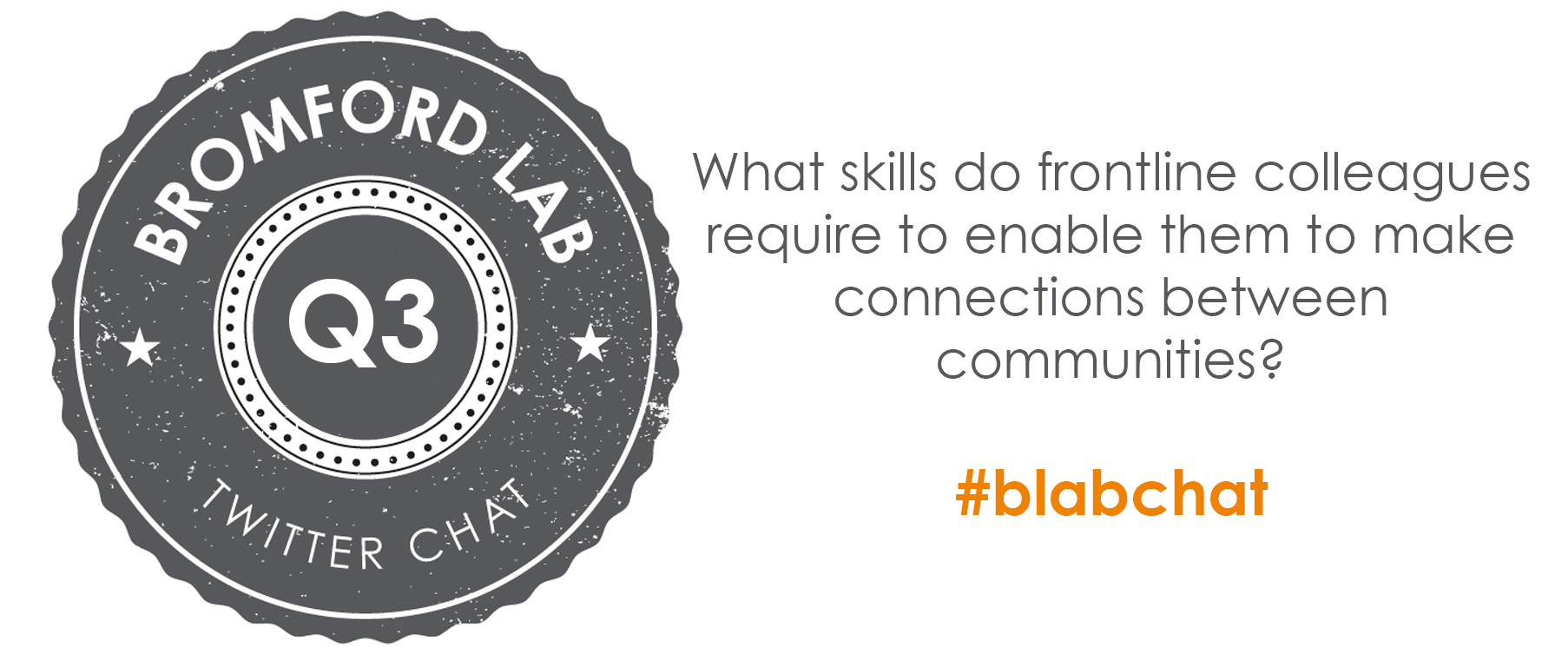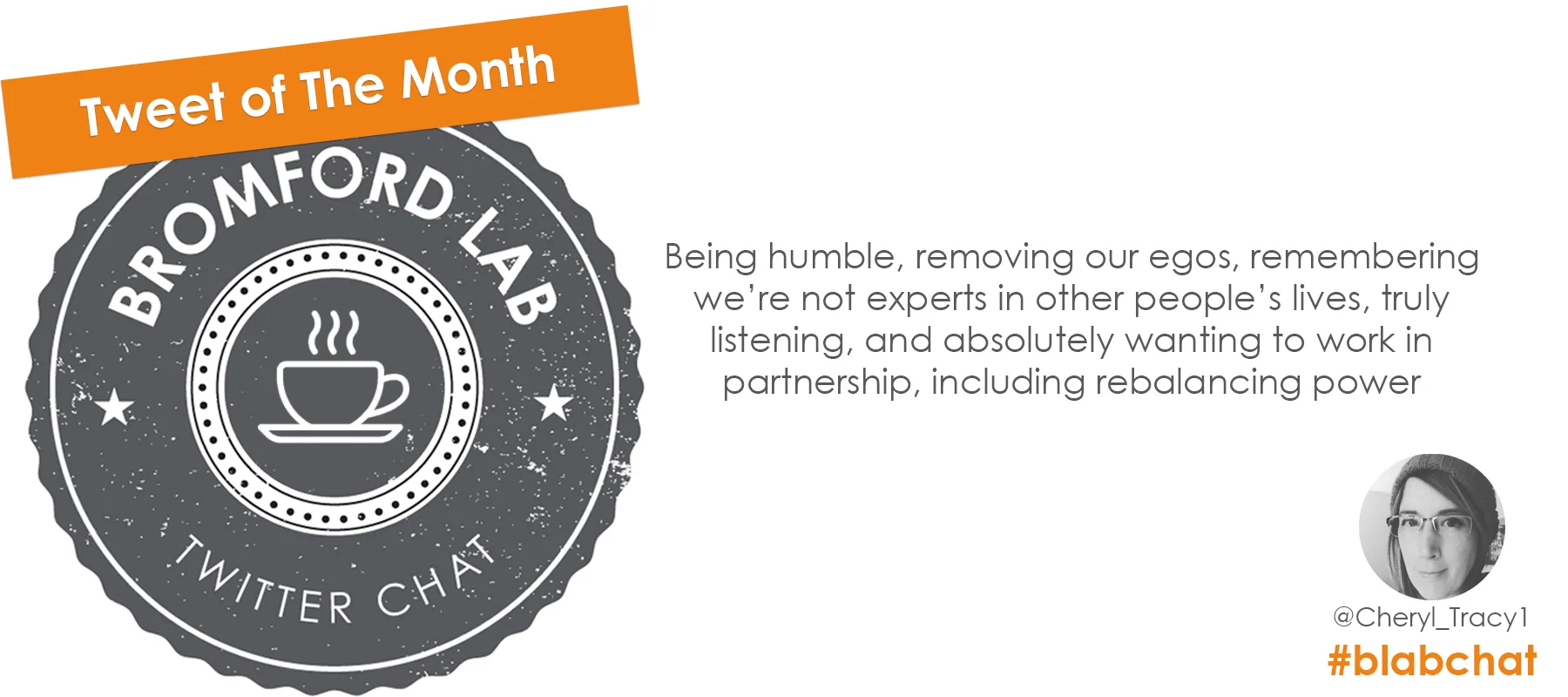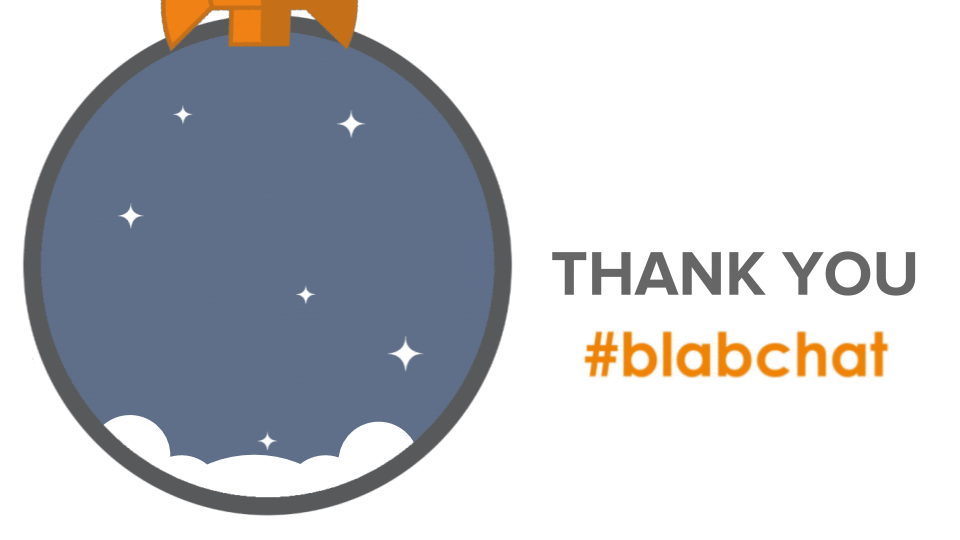“Neighbourhoods are where changes happen and the only way to sustain them is through the relationships people make with each other”
- Vicky Green, Head of Locality for Black Country, Bromford
Foreword by Vicky Green, Head of Locality for Black Country, Bromford
It's a week now since the frantic typing party that was the November #Blabchat. At times it was hard to keep up, even across 3 devices. It’s easy to miss tweets as they come up on the night, so it’s been great scanning through the twitter feed over the last few days, catching up on some of the conversations that I didn’t see on the night. Through the four questions I posed, I wanted to kick-start a discussion around the pros and cons of social prescribing and the ways in which social prescribing intersects with the asset-based community development (ABCD) approach we’ve been developing through localities and neighbourhood coaching here at Bromford.
On the night there was a lot of discussion about the paternalistic language which surrounds social prescribing. But above all of the language, I think a few things we all agreed on was that no matter what we call our respective approaches, we aren’t experts in other people’s lives. The best solutions nearly always come from within communities and the social connections which people make are key to forming the right relationships. Perhaps the best way to think about social prescribing is simply as one part of community building; a social prescription is about the GP making a referral, but once that referral hits the social sector, it's not a prescription any more, it’s simply community building. We don’t start by assessing medical need, but rather by working with customers to self-identify what they care about and then using local knowledge to facilitate connections.
No matter which view point you come from, health or social sector, our overall aim is for people to self-identity what support they want and need, and for those services and activities to be available to them when they need them. Arguably, our best measure of success is to one day not be needed. The less institutions need to do for communities to work, the better. By working closely with our communities, finding out what works and spending time listening, creating relationships that are authentic and not just signposting to activities, arguably a big role for HAs and the social sector should be to help nurture self-sustaining reciprocal relationships and move out of the way!
I was really looking forward to this #blabchat and as ever, there was some great discussion. Thank you to everyone who contributed. I hope you found the conversation as useful as I did.
Here is a round-up of the discussion from the Lab . . .
OK, so it was such a large topic of conversation on the night, it would be placing a huge, lumbering elephant in the room if I didn’t start by addressing the issue of language. It seems that the term ‘social prescribing’ is quite divisive. On the whole, people who come from a non-medical background, certainly a coaching background, can often find the term 'prescribing' too paternal. It conjures up the notion of ‘telling people what to do’ rather than working with people to find their own solution - more about ‘transactions’ than ‘networks’. There is perhaps truth in that, but there is also perhaps an element of context at play here too. Social prescribing was defined by the NHS ‘as a means of enabling GPs and other front-line healthcare professionals to refer people to services in their community instead of offering medical solutions’. It’s not a term that has come from the social sector, but that doesn't mean that we can’t or don’t already play a role. Importantly, it also doesn't mean that ‘social prescribing’ is the only way of working with people to provide health and well-being and build community assets. We’re all players in the health and well-being space, we just all play slightly different variations of the same game, and that’s OK, isn’t it? Really, it’s the end goal which should be most important!
If you strip back the language of social prescribing, coaching and asset-based community development, what we were all talking about on the night was helping people form connections which improve their lives in some way (big or small). When thought of in those terms, any person or organisation who can help facilitate those connections through the provision of services or as community connectors, navigators, or whatever we want to call them, is playing a role in some way, shape or form. One of our biggest takeaways from our social prescribing test with Elemental is that defining the right role is super important. This was a view shared by many contributors on the night. On the whole people felt that the role of HAs and the social sector as a whole, was on the delivery end, rather than the referral end.
There was concern from many contributors that social prescribing seems to start from a position of deficit. Paul Taylor suggested that “housing has to move away from focusing on what’s wrong, and seek to solve problems with communities not for communities”. Indeed, our test with Elemental set out to explore what part social prescribing can play a part in that. But the level of involvement from HAs and the social sector and the way in which they are involved was a hot topic - formally or informally? directly or abstractly?
Shirley Ayres made a great point when she suggested that “a major challenge is (paradoxically) the need to connect the many organisations working in the ‘connecting communities’ space who are not actually connected with each other and possibly have not themselves made any links with social prescribing”
Overwhelmingly, contributors on the night felt that the biggest weakness of social prescribing was the name itself. Michelle Butler commented that “it puts so many people off before they even get to hear the concept”. Leeann Monk from Elemental added that “a lot of people say the same about the name. What we have found is that it’s hardly ever called social prescribing when happening in a community”. Leeann shared some of the names she had heard used as alternatives, including - Passport to Well-being, Community Connect, Getting on Well, and Connect Well Hub.
There was wide agreement that social prescribing also has the potential to contribute to work already taking place around helping connect communities and develop community assets. However, concerns were raised by contributors about funding. At present funding doesn’t follow the prescription, meaning that if funding is not addressed as social prescribing becomes more popular and widespread, the social sector, but perhaps more specifically an already stretched community and voluntary sector, could become overwhelmed.
Salma Afzal made a good point by highlighting that in some places social prescribing can be limited by the lack of safe spaces to engage in activities and/or a lack of tailored community activities. Karen Gilmore expanded on this by suggesting that a weakness of social prescribing might be the potential for people to disengage if the connections made are not sustained or the prescription isn't followed through once people leave the GP surgery. This perhaps once again touches on the importance of understanding the roles different sectors and organisations can play and the importance of both building those community assets and working closely with both people and communities to ensure that individual and collective outcomes are achieved.
Helen Napierski encapsulated the responses of many contributors to this question in her own response, suggesting that this question is “all about knowledge and relationship building”. The skills required are “the desire to research and network the communities they work in.” There was a general feeling that if you are able to get out there and be curious about your community, meet with people and form trusted relationships, the opportunities to make connections and broker introductions will follow.
But with personal relationships being such an integral part to this, Abi made an important point by asking what happens when “colleagues move on to pastures new and partner connections are lost”?
Great question! How do we manage that?
The guidance on strengths-based approaches set out in the Care Act suggests that ‘focused discussion with a person about their strengths can lead to new opportunities to develop and share skills and make new connections’. This is something that we would certainly recognise to be true at Bromoford and is also a view shared by many contributors on the night.
Karen Gilmore explained that “we’re not ‘experts’ in people’s lives; their fears, pressures or preferences.” Karen suggested that those working closely with people to help find solutions to problems should also be aware of unconscious bias. Controlling unconscious bias, being non-judgemental and empathetic was also a point raised by other contributors including Julie McCarthy and Salma Afzal who both described similar skills such as active listening, empathy, emotional intelligence. Both also touched upon the importance of taking an interest in communities, demonstrating commitment and building trust.
Our host Vicky Green felt that this could be the biggest question of all. Vicky thought that the question could even be rephrased - “I’d say how do communities capture and share these things, it’s their community!”
Paul Taylor shared an NTDi graphic (above) which he felt summed up what we should be working towards. If the challenge is to turn this into a day to day reality, contributors agreed that partnerships are key. There is no point one organisation trying to build 'THE' community directory to end them all because it's always out of date. Michelle Butler made a good point suggesting that “co-creating something also gives it a greater chance of sustained longevity”.
There is however a balance to be struck. Whilst there is a real danger that organisations spend too much time trying to answer this question at the expense of actually getting stuff done, there is another danger that organisations fail to recognise and respond to the need to do it at all. Michelle went on to suggest that “maybe it's not about creating the library ourselves, but more about giving communities the skills to run it themselves?” This was a popular point of view on the night.
The diagram above is from the Social Care Institute for Excellence. It sets out the different types of assets or resources available in communities. It’s important to recognise that a person’s own contacts in the community may include formal and informal networks and that a focused discussion with the person about their strengths can lead to new opportunities to develop and share skills and make new connections.
The answer probably doesn’t lie in creating more professionalised services because that will undoubtedly create a reliance in our customers upon them. We wrote a post back in July 2016 in which we talked about the importance of being able to spot the various community resources out there and help stitch them together; because that’s where the real potential is. Our communities are full of people with diverse skills, qualities and life experiences, but these are not always recognised.
Earlier this year, the Royal College of General Practitioners called upon the Government to facilitate social prescribing across all GP surgeries and more recently the Government themselves have included social prescribing as a key component of the UK’s first Loneliness Strategy. Social prescribing is undoubtedly gaining pace, and with it comes a whole host of new opportunities. I believe that there could be a danger that the social sector gets too caught up in arguing about the language and fails to understand the opportunities. Over the past few months we’ve been exploring the relationship between social prescribing and our own coaching approach, but hopefully the November #blabchat has also helped kick start a valuable discussion with the wider social sector.
Karen Gilmore and Cheryl Tracy made a couple of great observations which seem to summarise things up perfectly. “Social prescribing probably resonates well with the medical profession because it gives them a model to ‘refer’ on. But for people who connect in to it, it is simply about the community offering something that they may not have known was open to them.” For HAs and the social sector “it’s neighbourhood planning, ABCD, co-production or good old fashioned community development”.
We are looking forward to sharing a virtual mince pie and glass of sherry with you all at the next instalment of #blabchat on December 6th 2018. See you then and as ever, thank you for your contribution. Without you guys, there is no chat!






















